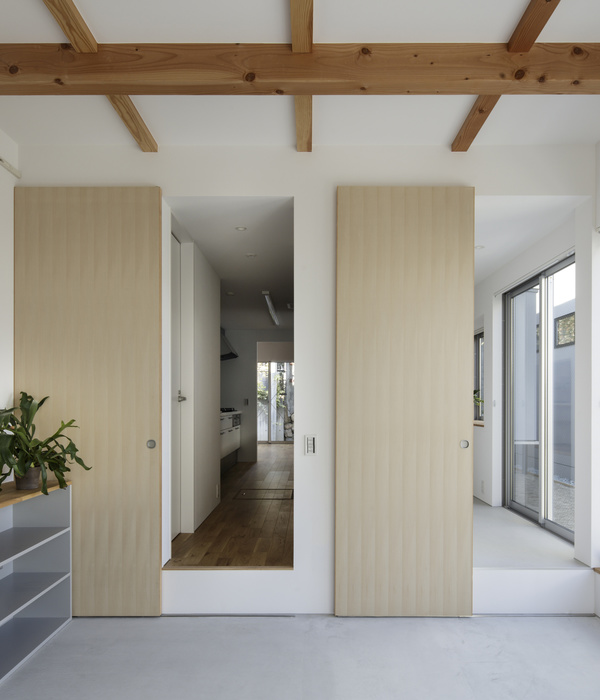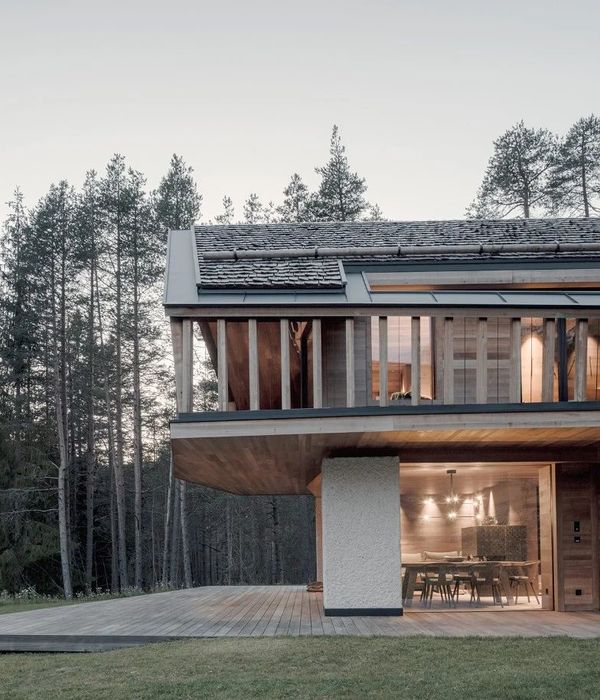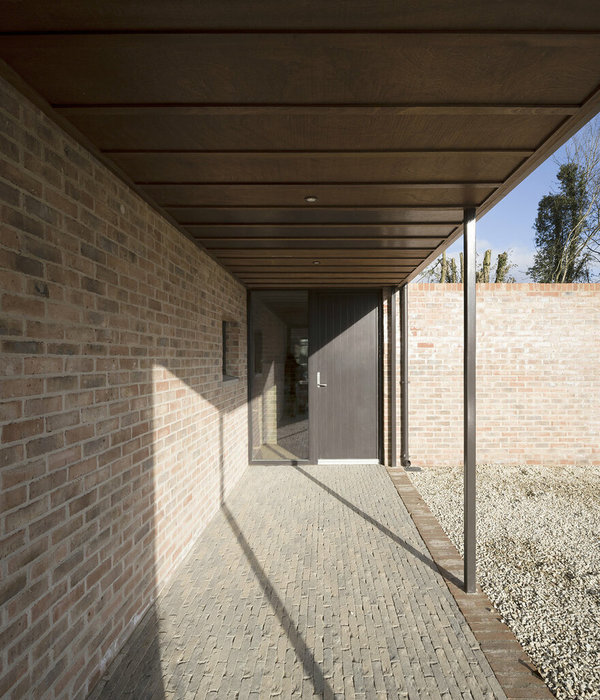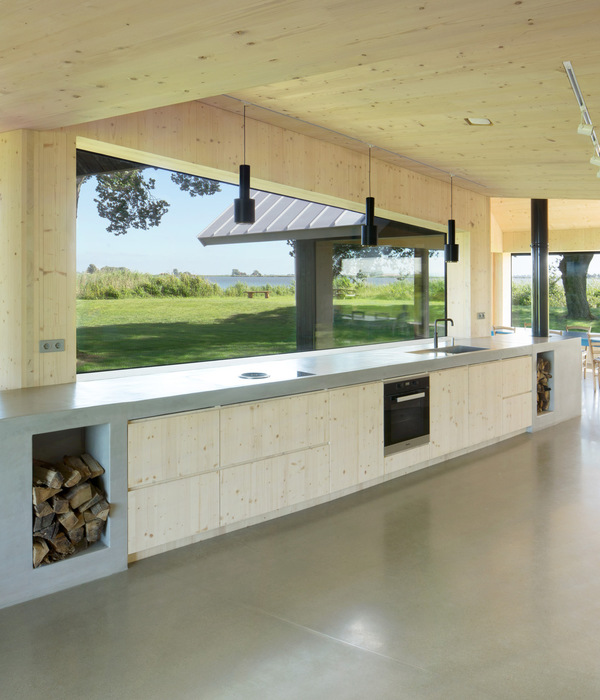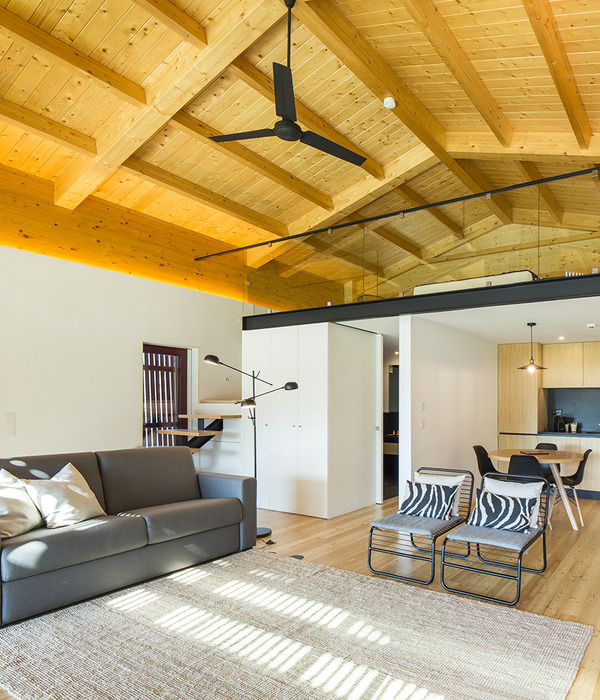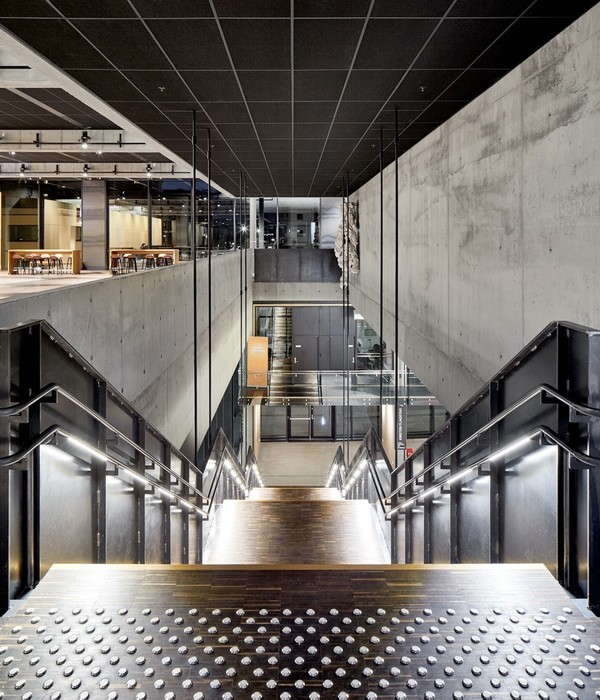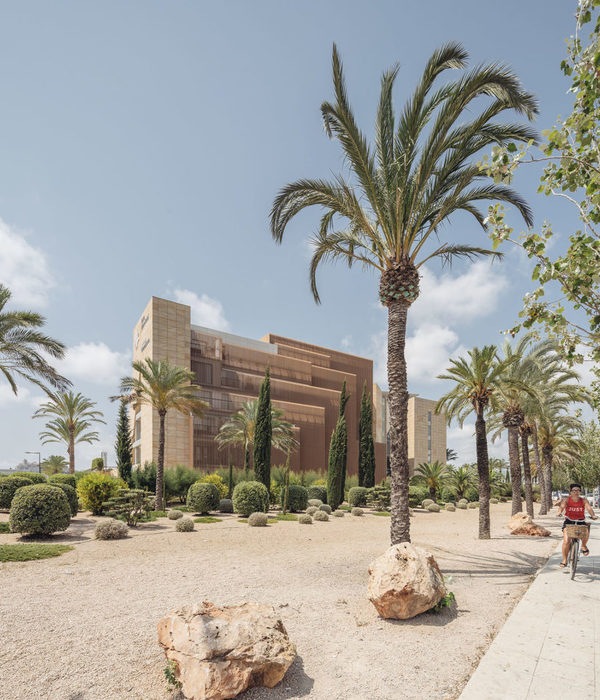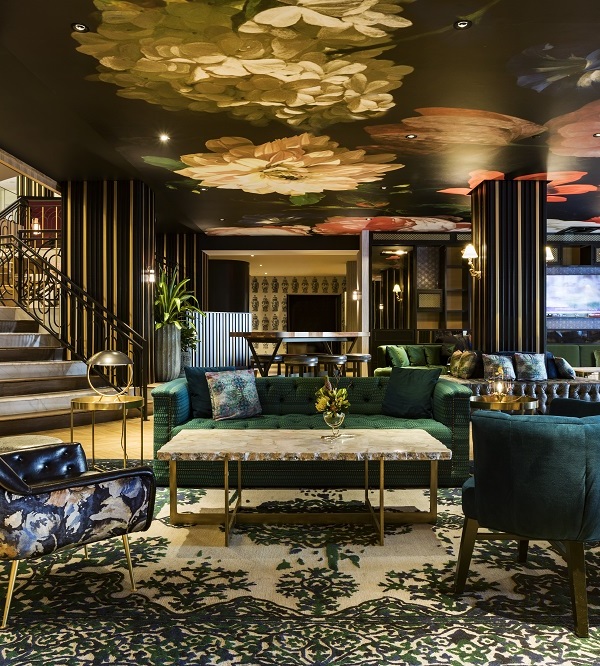- 项目类型:检测中心及办公建筑
- 项目地点:深圳市南山区
- 容积率:2.05
- 建设方:深圳市计量质量检测研究院
1. 摘要
通过共享中庭与开敞空间的精心营造,呈现出一个与环境协调、层次多样、空间良性互动的现代公共综合体,改变了以往科研建筑的冰冷态度。
2. 项目信息
项目类型:检测中心及办公建筑
项目地点:深圳市南山区
总建筑面积:29,000m2
容积率:2.05
设计时间:2008
竣工时间:2013
建设方:深圳市计量质量检测研究院
3. 正文
位于南山区西丽街道的国家数字电子产品质量监督检验中心,是国家质检总局在深圳布局的第一个国家级数字电子产品检验中心,旨在打造成为代表国内最高水平和最具技术竞争力的数字电子产品公共检测平台、产品检测技术研究机构,资质认证机构,及国内数字电子产品检测技术标准化的主要制定者。
基于国检中心的主要功能需求,结合项目周边环境——西侧为车流较多的市政道路,北侧为自然山体,东、南侧为城市绿地,建筑采取混合式布局的方案:为阻隔西侧的噪音及利用现有的自然景观,高层区设在西边,形成西高东低的布局。又因建筑体量不大,设计团队重点突出内部空间的细节处理,希望设计出“一应俱全”,同时具有精致感的现代科研、办公及服务综合体。
大楼包括三个相互连接的混合用途办公空间:北侧为大空间的实验室,包括对数字电子产品的电气安全性、电磁兼容性、环境适应性等性能进行质量检验的8个实验室;靠近主入口的南侧为服务空间及小型实验室,包括数字电子产品检测技术研究中心和数字电子产品技术法规及市场准入研究中心;中央为交通联系体及公共空间。三种功能通过中部的中庭组合在一起,既相对独立,尽可能避免人行流线的交叉;又相互联系,为企业自主创新提供一站式检测技术服务。
建筑形体外表面为灰色外观,庄重沉稳。东西两面易产生噪音的地方,通过大面积的实墙面进行有效的隔离。室内处理上,因一些实验室对静音及震动有较高的要求,为避免环境实验室测试工作时所产生的噪音对其造成影响,设计除对环境实验室采取减震、隔音、降噪等措施外,还通过一些过渡空间,如预留有3米法电波暗室、10米法电波暗室及中庭使其与其他实验室分隔开。
在纵向轴线上,设置主入口,并通过类似桥的过渡空间引导人们进入建筑内部。半地下室和室外坡道的设计使建筑产生了更亲和的人性化空间,改变了以往科研建筑冰冷的态度。在建筑内部,由于进深比较大,按照传统的方式布置功能对采光及通风都有不利的影响。因此在建筑体量中部设有通高的采光中庭,形成横向的空间轴线,提供了柔和且稳定的顶光,可以满足实验室的光照要求,避免强烈的太阳直射,而且还可以形成室内的小气候,促进空气流通。通过会议室和绿化连廊的节点设置,创造更丰富有趣的办公空间,也打破了人与人之间的隔阂,精心营造促进交往与共享的开敞空间。
1. Abstract
Through the careful designing of the atrium and open space, a modern, public, and environmentally harmonious complex has been created with multi-layer and multi-space interactivity, which out of the conventionally cold figure of scientific research buildings.
2. Project Information
Type: Office Building
Location: Nanshan District, Shenzhen
Gross Floor Area: 29,000m2
Floor Area Ratio: 2.05
Design: 2008
Completion: 2013
Client: Shenzhen Academy of Metrology & Quality Inspection
3. Text
Located in Xili Street of Nanshan District, the National Digital & Electronic Products Inspection Center is the first one established by AQSIQ in Shenzhen, which aims to represent the highest level, competitiveness and standard setter in this field.
This inspection center uses a mixed layout design method in response to the building's function and the site's context. The high-rise is set on the west area to cut off the noise on the west side and to make use of nature landscape, so we form a layout of High-West and Low-East. Because the massing of the building is relatively small, the design emphasizes the details of interior space to make an elegant, modern research and office building.
The building comprises three office spaces that are interactive and mix-used: the north is the laboratory area, including eight labs for electricity product inspection; the service area and small laboratory are in the south area near the entrance; and the circulation system and public space are in the middle area. These three functional areas are connected by the atrium, which maintains the privacy of each function while promoting communication to provide one-stop inspection service for enterprises.
Its gray facades convey a steady feeling. The large, solid walls are adopted to effectively isolate the noise of the east and the west. For the interior, the design of the environmental laboratory not only uses shock absorption, sound insulation, noise reduction and other measures, but also uses some transitional space to avoid interference.
The main entrance is set on the longitudinal axis and introduces people to the inside through the transitional space, such as bridge. Semi-underground and exterior ramps create an agreeable space. Inside the building, because the space is set quite deep into the ground, we inserted an atrium to introduce sunlight into the building, forming a horizontal space axis. This atrium meets the lighting demands of the laboratory and creates a microclimate in the interior to promote ventilation, inspires the communities of people who work there.
{{item.text_origin}}


